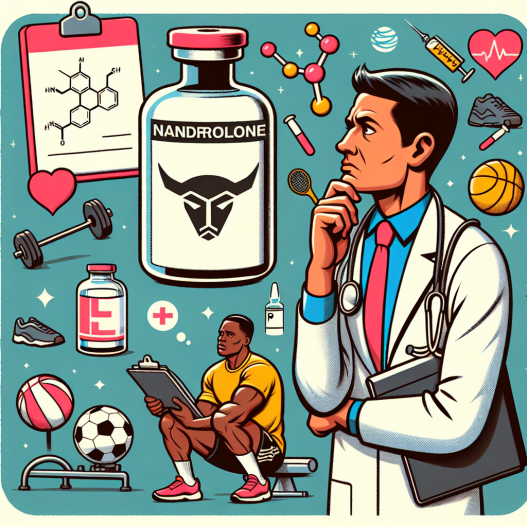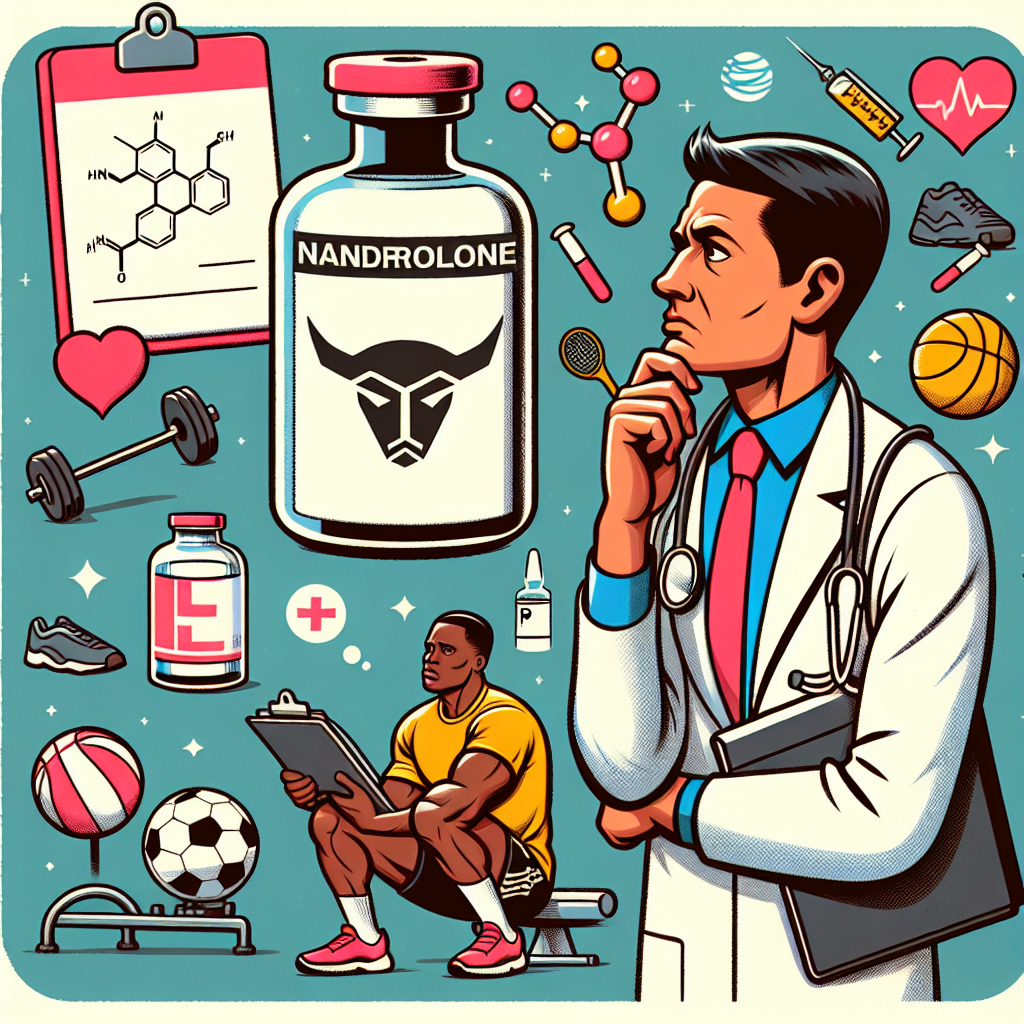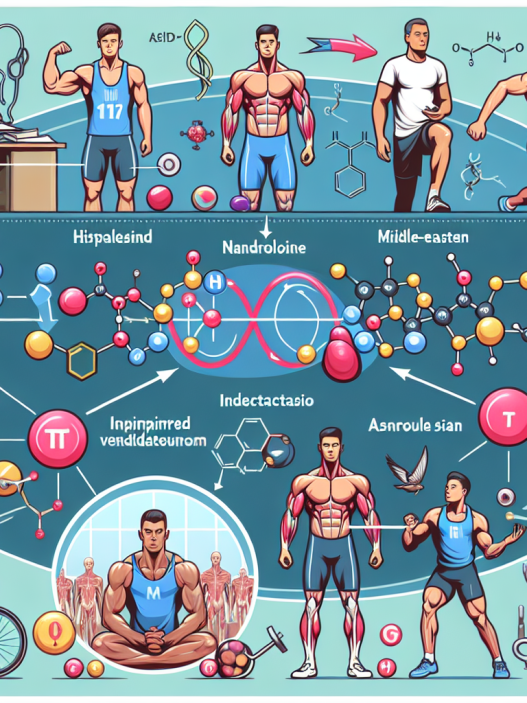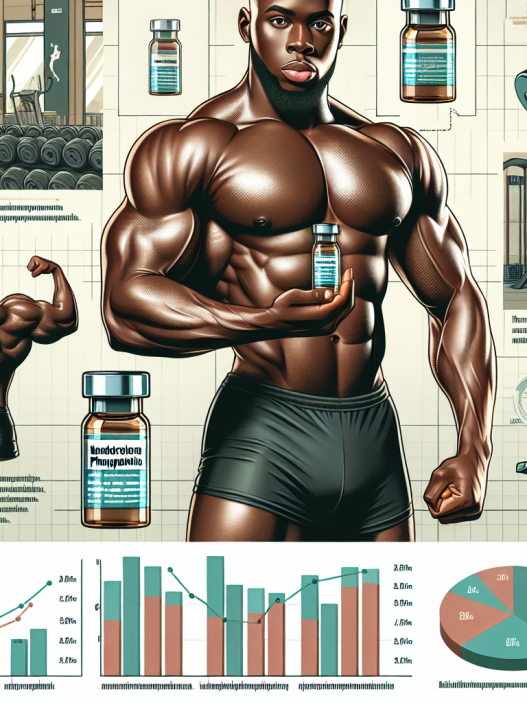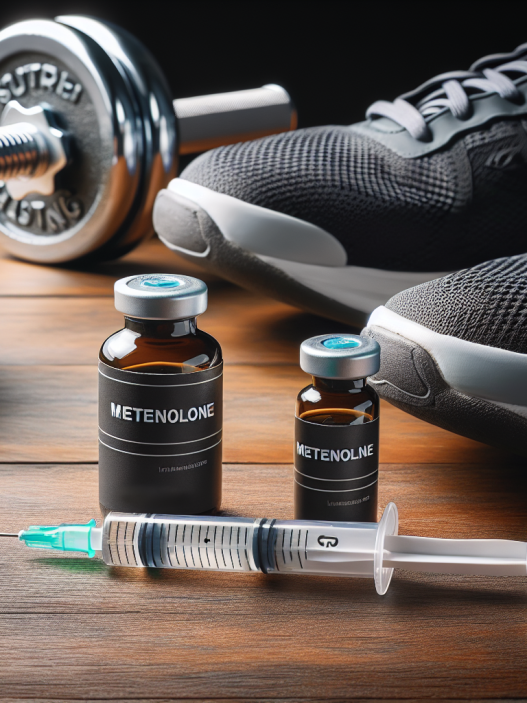-
Table of Contents
The Controversy Surrounding Nandrolone in Sports Pharmacology
Sports pharmacology has long been a topic of debate and controversy, with athletes constantly seeking ways to enhance their performance and gain a competitive edge. One substance that has been at the center of this controversy is nandrolone, a synthetic anabolic steroid. While it has been used for medical purposes, its use in sports has raised concerns about fairness and the potential health risks for athletes. In this article, we will explore the controversy surrounding nandrolone in sports pharmacology, examining its effects, regulations, and ethical considerations.
The Effects of Nandrolone
Nandrolone is a synthetic form of testosterone, a hormone that is naturally produced in the body. It is classified as an anabolic steroid, meaning it promotes muscle growth and enhances physical performance. In sports, it is often used to increase muscle mass, strength, and endurance, giving athletes an advantage over their competitors.
Studies have shown that nandrolone can significantly increase muscle mass and strength, with some athletes reporting gains of up to 20 pounds in just a few weeks (Kanayama et al. 2008). It also has a positive effect on red blood cell production, which can improve oxygen delivery to muscles and delay fatigue. These effects make it an attractive option for athletes looking to improve their performance.
Pharmacokinetics and Pharmacodynamics of Nandrolone
Nandrolone is typically administered through injection, with a half-life of approximately 6-8 days (Kanayama et al. 2008). This means that it can remain in the body for several weeks after use, making it difficult to detect through standard drug tests. It is also metabolized into various forms, including 19-norandrosterone, which can be detected in urine samples for up to 18 months after use (Kanayama et al. 2008).
The pharmacodynamics of nandrolone involve its binding to androgen receptors in the body, leading to an increase in protein synthesis and muscle growth. It also has anti-catabolic effects, meaning it can prevent the breakdown of muscle tissue, allowing athletes to train harder and recover faster (Kanayama et al. 2008).
Regulations and Testing
Due to its potential for abuse and unfair advantage in sports, nandrolone is classified as a prohibited substance by the World Anti-Doping Agency (WADA) and is banned by most sports organizations. Athletes who test positive for nandrolone can face severe consequences, including disqualification, suspension, and loss of medals or titles.
However, the detection of nandrolone in athletes has been a challenge, with some studies showing that it can be easily masked or avoided through various methods (Kanayama et al. 2008). This has led to debates about the effectiveness of drug testing and the need for more advanced methods to detect the use of nandrolone and other performance-enhancing substances.
Real-World Examples
The use of nandrolone in sports has been a hot topic in recent years, with several high-profile cases bringing it into the spotlight. One such example is the case of American sprinter Marion Jones, who was stripped of her Olympic medals and banned from competition after testing positive for nandrolone in 2006 (Kanayama et al. 2008). Another example is the case of British sprinter Dwain Chambers, who admitted to using nandrolone and was subsequently banned from competition for two years (Kanayama et al. 2008).
Ethical Considerations
Aside from the potential health risks, the use of nandrolone in sports raises ethical concerns about fairness and the integrity of competition. Athletes who use nandrolone have an unfair advantage over those who do not, and it goes against the principles of fair play and sportsmanship. It also sets a dangerous precedent for young athletes who may feel pressured to use performance-enhancing substances to keep up with their peers.
Furthermore, the use of nandrolone and other banned substances can have a negative impact on the reputation of sports and the trust of fans. It undermines the credibility of athletic achievements and can lead to a loss of interest and support from the public.
Expert Opinion
According to Dr. Gary Wadler, a leading expert in sports pharmacology, the use of nandrolone in sports is a serious issue that needs to be addressed. He states, “The use of nandrolone and other performance-enhancing substances not only poses health risks for athletes but also undermines the integrity of sports and the values it represents” (Wadler 2008).
Dr. Wadler also emphasizes the need for stricter regulations and more advanced testing methods to detect the use of nandrolone and other banned substances. He believes that education and prevention are key in addressing this issue and promoting fair and clean competition in sports.
Conclusion
The controversy surrounding nandrolone in sports pharmacology is a complex issue that involves various factors, including its effects, regulations, and ethical considerations. While it may offer short-term benefits for athletes, its use can have serious consequences for their health and the integrity of sports. It is crucial for sports organizations, athletes, and the public to work together to address this issue and promote fair and clean competition in sports.
References
Kanayama, G., Hudson, J. I., & Pope Jr, H. G. (2008). Long-term psychiatric and medical consequences of anabolic-androgenic steroid abuse: A looming public health concern?. Drug and alcohol dependence, 98(1-2), 1-12.
Wadler, G. (2008). The use of performance-enhancing drugs in sports: A dangerous game. Journal of clinical pharmacology, 48(9), 1066-1070.
